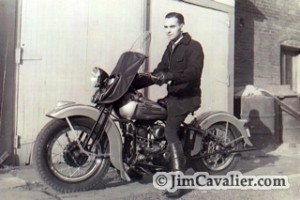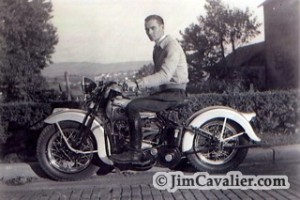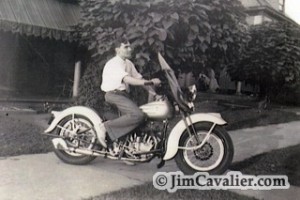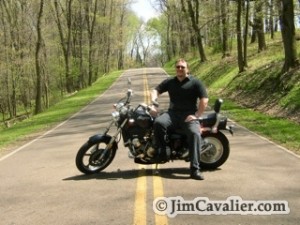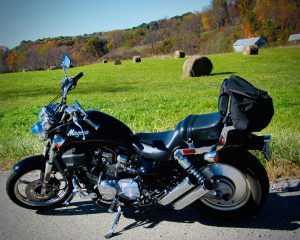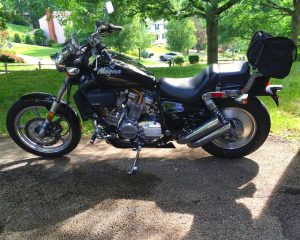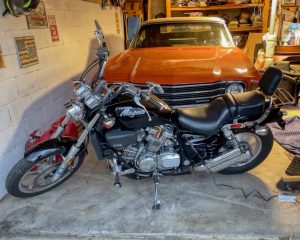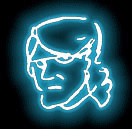Passing the Torch
(Or, How I became the Black Ace)
By Jim Cavalier
Nestled at the base of the Laurel Mountains in southwestern Pennsylvania near the Maryland border where US 40 meets 119, lies Uniontown. Of the many people who at one time or another called Uniontown home, the most famous is probably George Marshall, Army chief of staff during World War II and author of the “Marshall Plan” to rebuild Europe. He was awarded the Nobel Peace Prize while serving as Secretary of State in 1953. But even his great accomplishments pale in the wake of another great resident of Uniontown. George W. Foster, Jr. was born on January 27, 1909. The son of a local butcher, he made his living as an artist, painting movie posters for the local theaters, Mail Pouch ads on the sides of barns, and applying gold leaf lettering to almost every door and window, in almost every building in downtown Uniontown. Some of his original work from the ’40s still stands today.
In 1935 this patient, gentle, man, exhausted the better part of his savings to buy a used ’34 Harley. Being a very congenial man, he quickly fell in with the local enthusiasts and spent many weekends riding every back road between Uniontown and Morgantown, West Virginia. They would take long rides through the mountains occasionally stopping to ask “Where are we?” and get a bite to eat. In 1937, he found his “dream bike” sitting on the showroom floor of a local dealership, and traded his in. He acquired his ’37 for the princely sum of $328. (a sad testament to the effect of inflation, my “dream bike” is a mere $18,700.) In 1938 he married Louise Hunt, his sweetheart of 13 years, and proudly took his seat “On top of the world”.
George and his brother Charles (better known as “Chink”) rode the mountains, occasionally racing, but usually just enjoying the trip. George wore pressed jodhpurs, polished knee-high boots, and tailored black leather jacket whenever he and Chink took their long rides through Pennsylvania, into Maryland, then home through West Virginia with their buddies. His friends began jokingly referring to him as “The Black Ace” because of his polished jacket
They rode in packs through gorgeous the Pennsylvania countryside. Their bikes polished to showroom condition would reflect the sun as it glinted through trees lining two-lane mountain roads, single-cylinder engines rumbling through otherwise peaceful wooded areas. Helmets were made of leather and worn at the discretion of the rider. This is how the times like the Great Depression became known as “The Good Old Days.”
But even the Good old days had to end sometime. For my grandfather, they ended on March 25, 1943. Charles had been drafted into the infantry and sent to El Guettar, Tunisia to help push “That Bastard” Rommel out of Africa. During a skirmish in the desert, a mortar shell snuffed his young life. When word returned to Uniontown that Chink was dead, George sold his ’37 to a man from Liverpool, Ohio. The chrome on his bike didn’t shine as bright without his brother, and his riding days had come to an end.
George was drafted into the Army in late 1944 not long after the birth of his daughter. The war ended while he was still in training, and he returned home to Uniontown. In the ’50s as the call for independent painters dropped, he found employment as a draftsman for the Pennsylvania Department of Transportation’s highway division in Uniontown, a scant 4 miles from his home. That’s where he was working in 1969 when your’s truly came into the world in Akron Ohio. George was officially a grandfather.
My parents and I moved to Pittsburgh shortly after I was born and spent every weekend with George and Louise, or, as I came to know them, Weeze & Pap. They bought me my first bicycle at J C Penny, a white dirt bike with a fiberglass body that made it look like a motorcycle. Pap showed me how to take care of it, making sure that is was always clean. He taught me to take care of things and make them last. Twenty years later, that bicycle is still in my garage, and still clean despite the thousands of miles it has been ridden.
It was August of 1990, but it seems like yesterday when I drove to see Weeze and Pap from college. I was in my third sophomore year at the Indiana University of Pennsylvania, where Weeze had studied in the 1920s when my friend Toshio decided to sell his Harley. Toshio was from Japan, and I became friends with him while living in Elkin Hall, the international dorm. Not long after he bleached his hair blond (I’m not making this up), he purchased a 1980 Harley Davidson soft tail. It was a beautiful bike, black with chrome straight pipes. I had helped him work on it when the carbs got clogged up so he gave me the first shot at it when he decided to sell it. I immediately called Pap to tell him it was available. Toshio was asking $3000 for it, and it needed a new tank, but was otherwise perfect. Pap asked me to bring him some pictures of it, and we would see what we could do.
I drove to their house that weekend and showed Pap the pictures Toshio had given me. There was one problem. Toshio’s bike had a thin front tire on it. Pap’s bike had a wide front end, and Pap always felt that was safer since most of the braking power is in the front end. I was disappointed thinking I would never get a motorcycle when Pap suggested we drive to Z&M Motorcycle in town.
We walked into the showroom, and Pap critiqued each bike, comparing it to his ’37. There were three bikes on the floor that caught his eye. The first was a brand new red and white Heritage Softail, the second, a brand new blue Honda Shadow, and the third was a black 1988 Honda Magna that had just come in used, but in mint condition. Pap looked at the features of these bikes and was impressed with all the improvements that had been made over the years. He was very impressed with the hydraulic clutches on the Hondas and extremely pleased at the classic design of the Heritage Softail. We sat and talked with the salesman John Shocke, and he pointed out all the hidden features that we had overlooked.
Two hours had passed and we returned home to have dinner. Pap never let the conversation get off the subject of motorcycles, and after dinner asked if I could take him back to the shop to look at one last thing. When we returned to Z&M, Pap had me sit on the Magna. After subtly making sure that I liked it, he asked John if we could start it up to hear what the V-four sounded like. John wheeled it out the door and started it up. Pap then looked to me and said, “Well, what do you think m’boy? Would you take care of it?” I answered a resounding “Yes.” Much to my amazement (and the chagrin of Weeze and my mother), Pap pulled out a check and bought it on the spot. I finally had a bike.
I had a friend come by with his pick up truck to take the bike to my house Pittsburgh. I learned how to ride by taking the free motorcycle safety course offered by the American Motorcycle Association, along with several helpful tips from Pap. After I had my license, I would ride to Uniontown, and Pap would point out on a map his old routes through the mountains for me to follow. I thought Pap and I had grown close through 21 years of sitting on the porch listening to Pirates baseball, but this motorcycle turned us into the best friends ever to ride God’s green Earth. Pap began referring to me as “The Black Ace” after I purchased a black leather jacket to go with my bike. I was unsure about my new nickname until he told me the story of his bike, his brother, and his adventures. It was the destiny of the Diego men to become Zorro, mine was to become the “Black Ace”.
I made the trip to Uniontown every weekend and took the bike when the weather permitted. Pap would tease that I should get an umbrella so I could ride when it rained, or “Turn the air conditioning off” on the cooler riding days. Weeze always worried about my riding route 40 home, but it was one of Pap’s old trails and I wouldn’t have had it any other way. These were “The good old days” that my grandchildren will hear me speak of. Life was perfect.
Sadly, on August 26, 1995, Weeze passed away after a long series of health problems. As I feared, Pap didn’t last long without her. He was diagnosed with cancer in January of 1996 and passed away in his sleep the night of May 7th. As sad as I am for this loss, I know that he and Chink are riding matching Harleys over some shady mountain two-lane, bereft of traffic, and will make it back to Weeze’s just a little bit late for dinner. How do I know this? Otherwise, they wouldn’t be allowed to call it “Heaven”.
Fourth of July Ride 2022 on the Magna
©2022 JimCavalier.com

